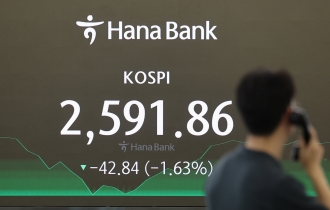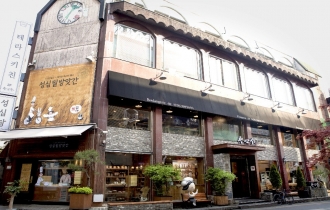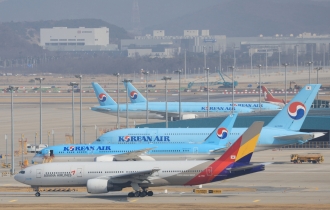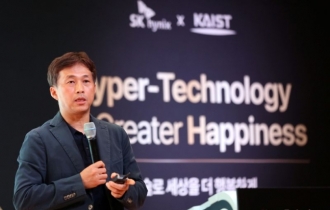‘OLED will face oversupply by 2020’
[THE INVESTOR] Organic light-emitting diode displays, undoubtedly the most sought-after right now, will face oversupply by 2020 and only innovative technologies will survive, said LG Display’s chief technology officer at a conference in Korea.
“The world’s OLED supply for smartphones will outstrip demand by 2020. … Despite that, innovative OLED technologies will still survive,” said Kang In-byeong, LG Display’s chief technology officer during his keynote speech at the International Meeting on Information Display conference held in Busan on Aug. 29.

He predicted that OLED supply would grow to 25.2 million square meters by 2020, outstripping demand of 7.3 million square meters.
The global OLED market is currently dominated by Korean display makers, Samsung and LG, in small and large panels, respectively. However, Chinese firms have recently joined the race due to its flexible nature, which is attracting many handset makers, including Apple.
Chinese display firms, including BOE, Visionox, EverDisplay Optronics, Truly, AOU and Tianma, all plan to expand OLED fabrication in the coming years.
“The global OLED market will see a paradigm shift in five years in terms of dominance due to the heavy investment from China,” Kang told The Korea Herald at the conference after the keynote speech.
However, the Chinese upstarts will not present a threat because innovative technologies will still survive in the oversupply of OLED panels, he said.
“OLED, whose technology level is still at a nascent stage, has high potential growth in terms of design flexibility and adaptability,” the chief technology officer said.
With its flexible nature, the OLED will be used in diverse areas by integrating it with new technologies such as Internet of Things, big data, artificial intelligence and robots, beyond current digital devices like smartphones and TVs.
As for its adaptability, the OLED will itself evolve into having multiple functions such as making sound, being used as a mirror and becoming transparent in the future. With these functions, they will replace traditional televisions, mirrors and windows.
“I am asked by many about (what happens) post-OLED. I can’t think of any other candidate for now so I say post-OLED is still OLED,” the executive said.
“The OLED still has a long way to go because of its unexplored nature. For instance, it may take more than 20 years to see rollable and flexible OLED displays perfectly fit into future connected and artificial-intelligence-powered devices,” he said.
The portion of LG Display’s OLED production is slated to grow to 40 percent in 2020 from 5 percent last year, while its LCD production will drop from 95 percent to 60 percent during the same period.
By Shin Ji-hye/The Korea Herald (shinjh@heraldcorp.com)
EDITOR'S PICKS
- Seoul shares rattled by Israeli attack on Iran; Kospi dips to nearly 11-week low
- S-Oil donates W560m to support firefighters
- LG CNS teams up with Yonsei University to nurture AI specialists
- Polestar 4 to make Korean debut in June
- S. Korea pledges W23tr venture capital fund for green investment at G20 meeting
- Sungsimdang outperforms bakery giants to log sales over W100b
- France rejects opening Paris flight routes to T'way Air, deals blow to Korean Air merger
- SK hynix chief underscores chip cooperation between Korea, US















